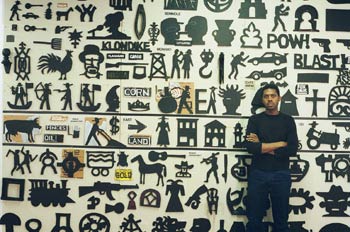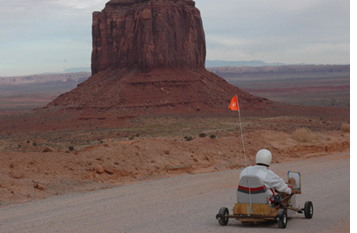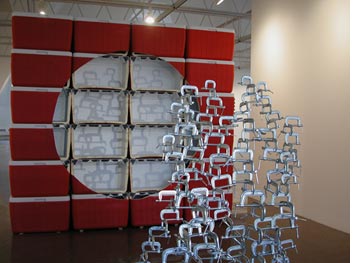Inner Equations
June 17, 2006 – September 10, 2006
Organized by Joe Baker
Heard Museum of Native Cultures and Art
2301 North Central Avenue
Phoenix, Arizona, USA
602.252.8848
For further information contact:
Nicole Haas
602.251.0283
nhaas@heard.org
The exhibition, Inner Equations, poses an unusual question: Can mathematics describe human emotion? In an attempt to find an answer, Inner Equations investigates links between art, mathematics and human emotion and draws connections between the physical world, which can be represented by mathematical equations, and the emotional world, which is often described through art. Opening June 17 at the Heard Museum, this exhibit is collaboration between Lorenzo Clayton, Navajo, and George Sidebotham, two professors from New York Citys Cooper Union for Advancement of Science and Art. Inner Equations was first installed in the Jersey City Museum in 2004.
At first appearances, Clayton, a professor of printmaking, and Sidebotham, a professor of chemical engineering, might seem to be uncommon collaborators. Yet, they found common ground to create Inner Equations in the concept of anthroposophy or spiritual science, which was developed by Austrian philosopher Rudolf Steiner. Inspired by Steiners writings, Inner Equations investigates parallels that exist between rational concepts of math and science and irrational human emotion.
Lorenzo Clayton is a printmaker and painter who has exhibited nationally and internationally. His work belongs to permanent collections of the Heard Museum, the Museum of Northern Arizona, the Tucson Museum of Art, the Zimmerli Art Museum, the Morris Museum, the Newark Museum and the Eiteljorg Museum. George Sidebotham has a doctorate in mechanical and aerospace engineering from Princeton University. He has published in the engineering field and has received numerous fellowships including an Exxon Teaching Fellowship and a Guggenheim Fellowship.
Inner Equations is organized by Joe Baker, Delaware Tribe of Indians, and will be on display through September 10, 2006.
The exhibit was organized by the Center for Intercultural Studies at Rutgers University and presented at the Jersey City Museum, Jersey City, NJ, 2004. The Heard Museum is pleased to present for the first time Claytons fully actualized ambitions for the installation as initially conceived.
About the Heard Museum
Since 1929, the Heard has educated visitors from around the world about the art and cultures of Native people of the Southwest. With almost 40,000 artifacts in its permanent collection, an education center and award-winning Shop & Bookstore and Café, the Heard remains committed to being a place of learning, discovery and unforgettable experiences.


